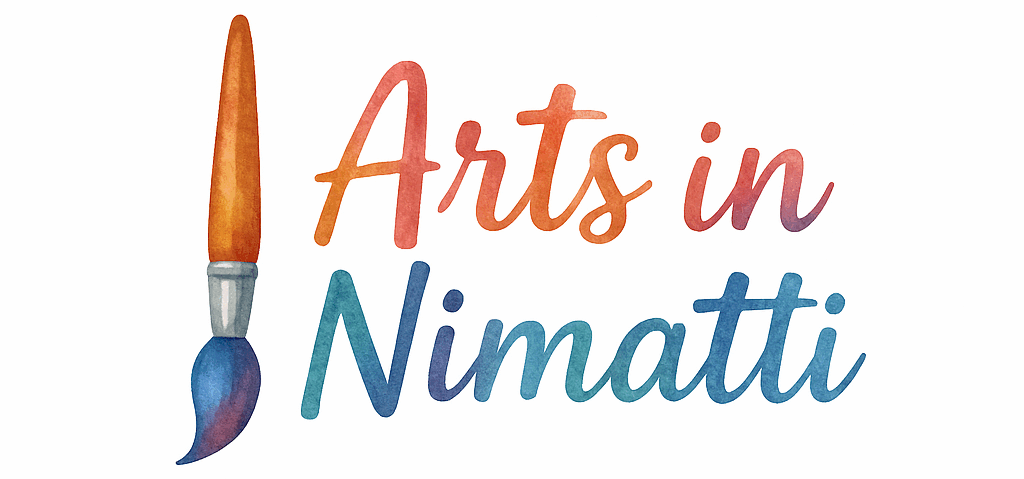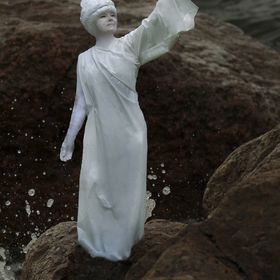Introduction
As artists, we constantly seek new sources of inspiration. From the vivid hues of the sunset to the intricate details of a flower, nature has a profound impact on the way we perceive and create art. Have you ever found yourself mesmerized by the natural world, and suddenly, your sketchbook is overflowing with ideas? This is nature’s influence on your creativity. In this article, we’ll explore 5 ways nature can influence your art and why connecting with the outdoors can elevate your creative expression.
If you’re looking for more ideas or want to expand your artistic journey, check out our art techniques guide for more tips on how to bring nature into your work.
Understanding the Connection Between Nature and Art
Nature has always been a muse for artists, spanning centuries of paintings, sculptures, and designs that capture the essence of the natural world. But why is nature such a powerful force in the artistic world? Simply put, nature is full of beauty, contrast, and complexity, making it a rich source of inspiration for creators of all mediums. When you incorporate elements of nature into your art, you’re not just adding visual appeal; you’re connecting with something larger than yourself.
Nature’s influence doesn’t end with mere inspiration; it can shape how we approach our materials, color palettes, and even the mood of our work. If you’re curious about the history of how nature influenced art, take a look at our art history section for an in-depth dive into past movements that have celebrated the natural world.
The Power of Natural Colors in Art
How Nature’s Palette Can Transform Your Artwork
Nature’s color palette is incredibly diverse, ranging from the serene blues of the sky to the fiery reds of a sunset. These colors can influence your art in profound ways. For example, painting a landscape that captures the softness of morning light or the vibrant hues of a blooming flower can evoke emotion and bring your artwork to life.
When you paint, the colors you use can completely change the mood of your piece. Bright yellows and greens might evoke feelings of joy, while muted browns and deep blues could add a sense of calm or even melancholy. Incorporating natural colors not only reflects the beauty of the environment but also helps tell the story behind your art.
For more on how to use color effectively in your artwork, check out our detailed painting tips. You might be surprised by how much the natural world can influence your choice of palette!
Inspiration from Landscapes
Capturing the Essence of Landscapes in Art
When you think of nature, landscapes are often the first thing that comes to mind. Whether it’s the rolling hills, vast oceans, or dense forests, landscapes offer endless possibilities for artistic interpretation. Many renowned artists throughout history, including the great impressionists, have turned to nature’s landscapes for inspiration. Monet, for instance, famously captured the beauty of his garden and surrounding landscapes, immortalizing nature in vibrant strokes of color.
Incorporating natural landscapes into your art allows you to bring an element of tranquility or grandeur into your pieces. You can choose to depict a serene beach scene or a sweeping mountain vista, and the natural world will influence how you approach the composition and colors.
Looking for inspiration to get started? Check out our art classes that can guide you on how to create stunning landscape art.
Nature’s Influence on Texture
How Natural Textures Shape Artistic Expression
Nature is full of textures that can add depth and interest to your art. From the roughness of tree bark to the smoothness of ocean waves, the variety of textures in the natural world offers endless opportunities for artistic exploration. These textures can be translated onto your canvas or sculpture to give your work a sense of reality or abstraction.
Textures in nature can also influence the way you handle your materials. For example, when depicting the softness of a flower petal or the ruggedness of a rocky cliff, you might experiment with different brushstrokes, palette knives, or even mixed media to recreate the tactile experience of the natural world.
Interested in mastering textures in your art? Our art techniques section has more information on how to bring nature’s textures into your creations.
Wildlife and Animals as Subjects
Drawing Life from the Animal Kingdom
Animals have been a staple of artistic representation for millennia. From the majestic lion to the humble bird, wildlife offers a unique perspective on life. Not only do animals bring a dynamic sense of motion and life to your artwork, but they also represent different qualities such as strength, grace, and freedom.
When you choose to depict animals in your art, nature provides both visual reference and symbolic depth. Whether you’re painting a wild tiger or sketching a small, delicate butterfly, animals challenge you to capture their essence, character, and spirit. Understanding animal anatomy and behavior allows for more realistic or stylized representations.
If you’re interested in learning more about animal sketches and mastering wildlife art, check out our art tutorials to enhance your skills.

The Role of Light and Shadows in Nature
How Sunlight, Shadows, and Natural Light Affect Art
One of the most beautiful elements of nature is its ever-changing light. From the warm glow of a sunrise to the dramatic shadows cast by midday sun, light and shadow have a profound impact on the way we experience the world. As an artist, understanding how to use natural light can elevate your art, creating depth, mood, and dimension.
Consider how the light plays in your environment. Does the soft morning light create a gentle, calming atmosphere in your painting? Or does the harsh midday sun create striking contrasts and deep shadows that add drama to your piece? By experimenting with how natural light and shadows interact with your subject, you can create more dynamic and lifelike artwork.
If you’d like to dive deeper into the effects of light in art, check out our art education section for tips on mastering light and shadow.
Finding Creative Inspiration in Nature
Nature’s Power to Spark New Ideas
Nature doesn’t just influence the colors or textures in your art; it also has the power to ignite your creativity. Have you ever walked through a forest, heard the rustling of the leaves, and suddenly felt an overwhelming urge to create? This is the kind of inspiration that nature provides—ideas and emotions that you didn’t even know existed within you.
Spending time outdoors can help you clear your mind and overcome creative blocks. Whether you’re sketching in a park or observing the changing seasons, the natural world offers endless opportunities for idea generation. The best part? It’s free! So why not take a break, step outside, and let nature’s magic work its wonders on your creativity?
For more on how to fuel your creative habits, visit our creative habits section.
Conclusion
Incorporating nature into your art isn’t just about copying what you see; it’s about drawing inspiration from the world around you and using it to express your unique perspective. Whether you’re captivated by natural colors, fascinated by wildlife, or inspired by the textures and light of the outdoors, nature provides endless opportunities for artistic expression.
By exploring nature in your art, you can deepen your connection with the environment and transform your creative practice. So next time you’re feeling uninspired, take a walk, observe the world, and let nature guide your artistic journey.
Frequently Asked Questions (FAQs)
1. How can I use nature in my art without simply copying it? Focus on interpreting nature’s elements—like colors, light, and textures—rather than directly replicating them. Let the natural world inspire your artistic style and voice.
2. Does nature influence all types of art? Absolutely! Whether you’re a painter, sculptor, or digital artist, nature provides endless inspiration for every medium.
3. How can nature help me overcome creative blocks? Nature’s peacefulness and beauty can clear your mind, sparking new ideas and bringing a fresh perspective to your work.
4. What are some ways to capture nature’s textures in art? You can experiment with different techniques like layering paint, using texture pastes, or incorporating natural materials like sand or leaves into your artwork.
5. How can I incorporate animals into my art? Studying animal anatomy and behavior can help you create more realistic or symbolic representations. You can also explore stylized or abstract animal art.
6. What’s the best time of day to capture light in nature for art? The golden hours—early morning or late afternoon—offer the best light for creating dramatic shadows and soft, flattering highlights.
7. Where can I find more inspiration for nature-themed art? You can explore nature in local parks, visit botanical gardens,

